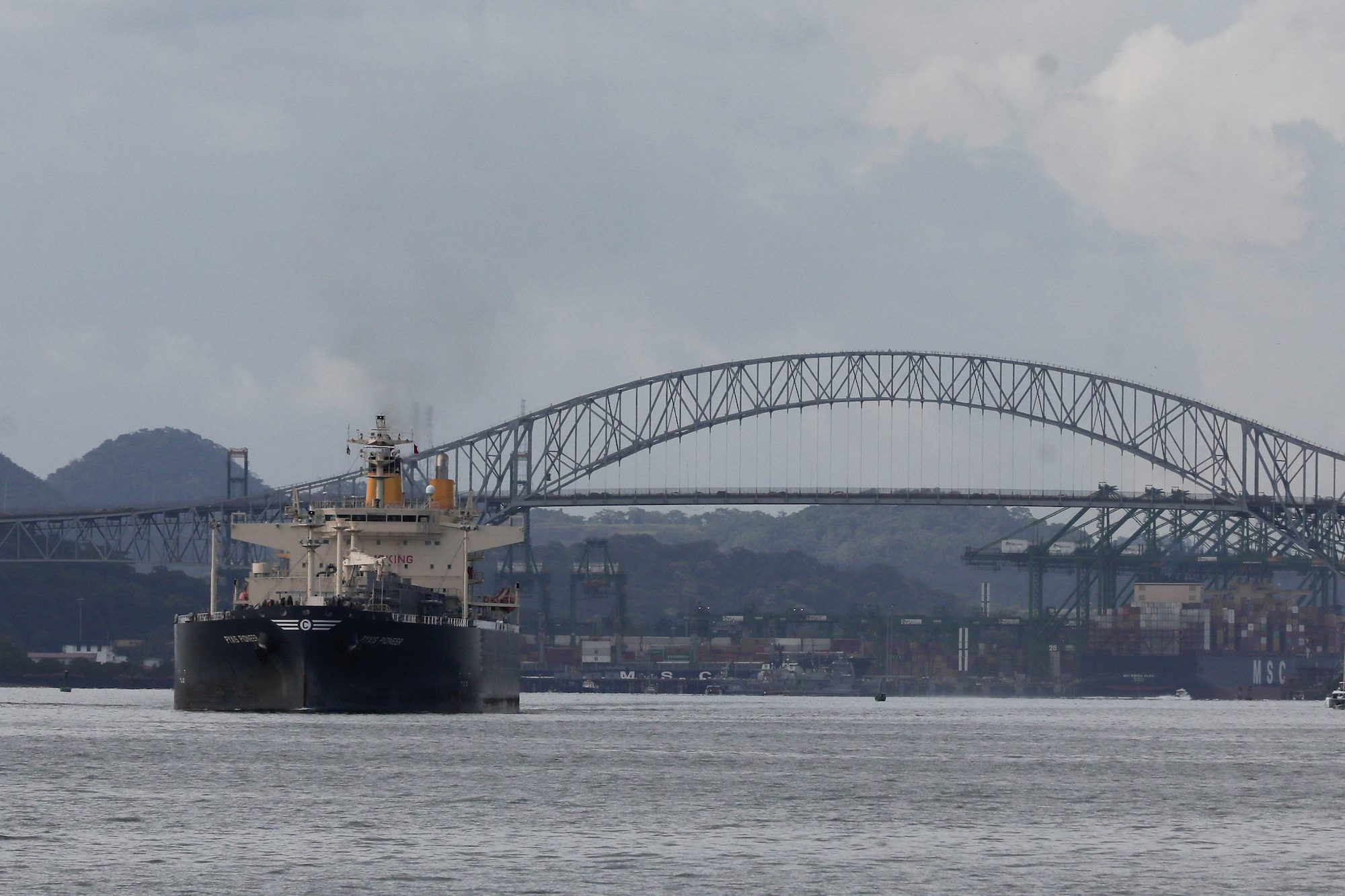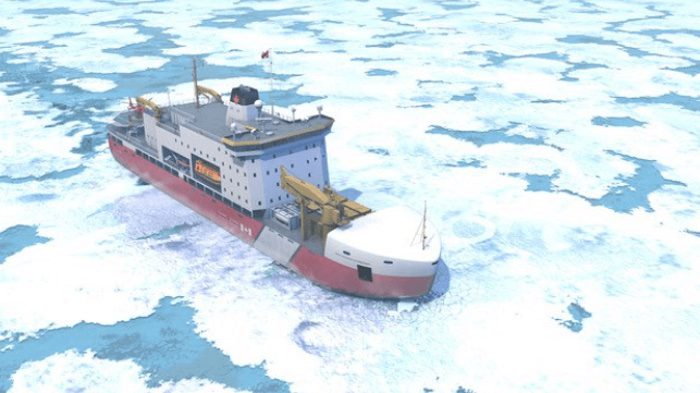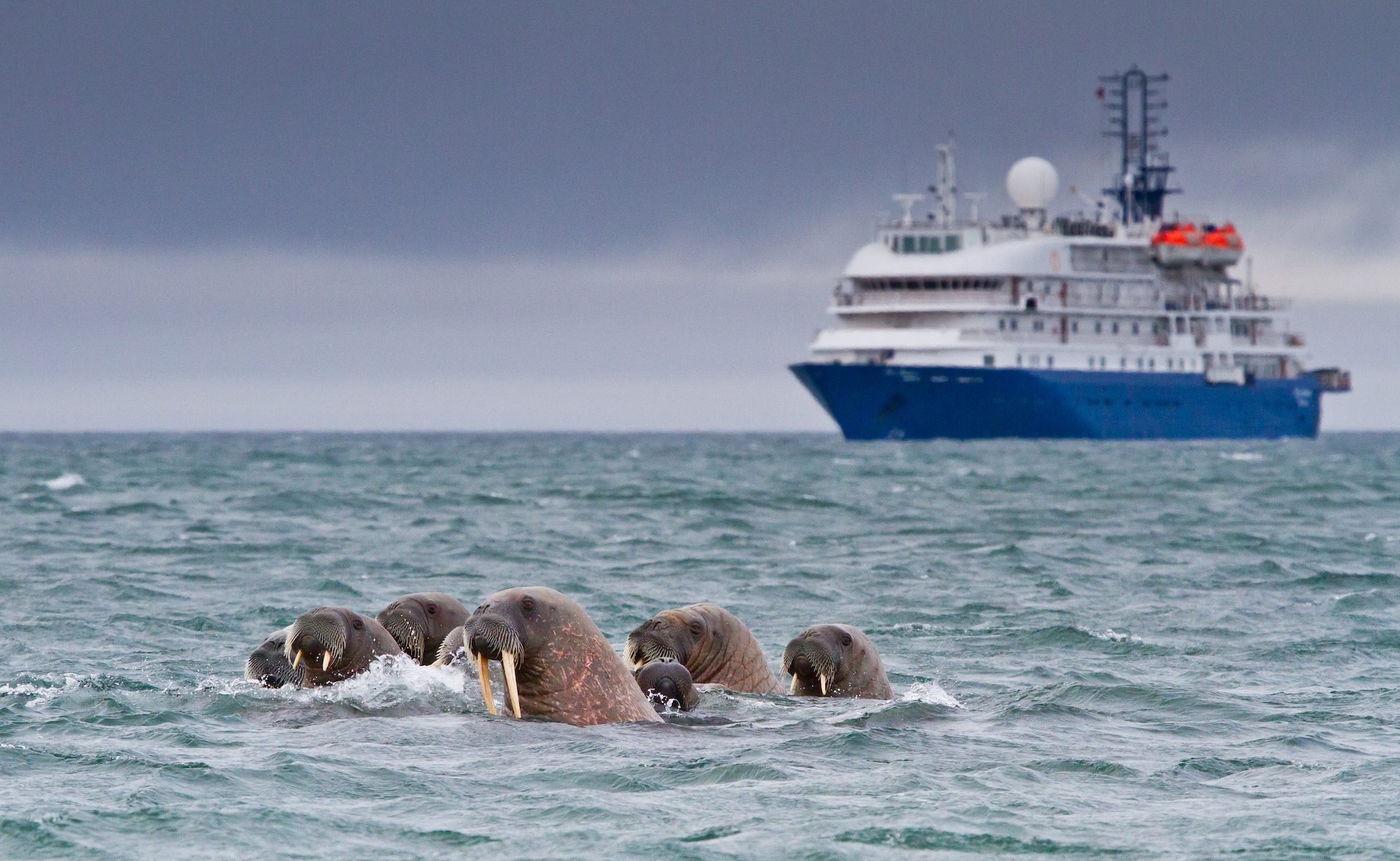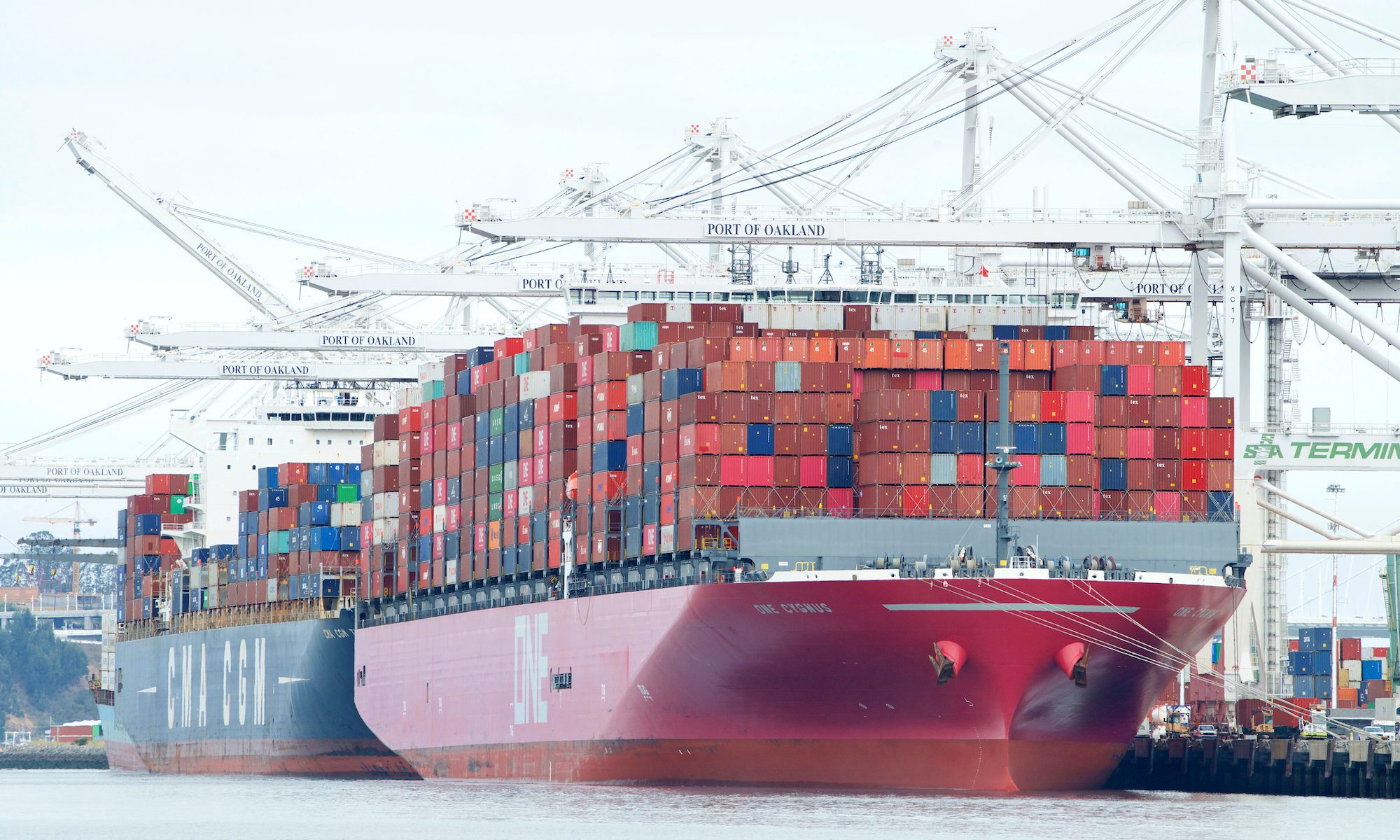(Bloomberg) —
A year that started with smooth sailing for the global economy — vanishing supply snarls, slower inflation and fading pandemic gloom — is ending with another gathering storm as the maritime industry and retailers that rely on it confront crises in the world’s two big ocean-to-ocean canals.
The sources of their woes are very different, but similarly acute.
Houthi militants, in a show of support of Hamas in its war with Israel, are attacking merchant ships as they sail past Yemen en route to — or from — Egypt’s Suez Canal. About 7,200 miles to the west, the world’s other key waterway in Panama is being severely disrupted by drought. Hitting routes that handle almost 20% of trade, the issues are forcing vast detours by the global merchant fleet, driving up freight bills, and boosting the shares of shipping companies.
About 180 container ships had diverted around Africa or were stopped and waiting for instructions to avoid attacks in the Red Sea, according to data late Wednesday from Flexport Inc., a San Francisco-based digital freight platform. Hundreds more are almost certain to join them unless western powers assure the industry that the Houthis, who have vowed to continue their attacks, can be quelled. Likewise, Panama diversions have been going on for weeks as low water levels restrict the number of transits.
The widespread rerouting from the canals ensnares ships hauling everything from toys and auto parts to gas to fuel to crude oil. In the short term, it will raise costs, cause weeks of delays, and could lead to the prices of some goods rising. It will also snarl the logistics of land-based firms that rely on predictable maritime schedules.
The cost to move goods in a 40-foot container from Asia to northern Europe jumped 16% over the past week and is up 41% this month, according to the Drewry World Container Index released Thursday. Likewise, fuel freight bills are jumping, with some oil majors and tanker companies saying they will avoid the southern Red Sea.
The potential economic impact is a painful reminder that global trade is vulnerable to breakdowns from something as rampant as a deadly virus, or as random as a single ship like the Ever Given clogging a major artery for almost a week.
This time, the culprits are a lack of rainfall in Central America, two regional wars, and the reality that missiles and aerial drones launched into the sea by rebels can cripple some of the world’s largest machines.
Sub-Ideal
For the logistics industry, the timing isn’t ideal.
All the ships that are diverted from the Suez Canal — as well as any that wait — will be at least a week or two late pulling into ports.Play Video
That’s during one of the busiest times of year for exports from China for restocking that retailers do after the holidays and before Chinese factories shut down for the Lunar New Year holiday in February.
For a global economy at a crossroads, it’s another cloud on the outlook as central bankers weigh the end of their fights against inflation with interest-rate hikes. Many companies in the US and Europe have only recently managed to adjust inventories back to normal levels and are struggling to plan for demand in 2024 given the unsettled world of geopolitics.
“It’s not the easiest time to be in business these days,” Trine Nielsen, senior director and head of European ocean cargo with Flexport, said on a conference call this week. “The potential of stock-outs is obviously one thing that we encourage everyone to look at because the cost of that might be higher than an expedited service.”
Air-Freight Options
The shipping companies weighing their options are reverting to southern hemisphere voyages that were commonplace in the centuries before the construction of two shortcuts between Asia’s export powers and the developed industrial engines of North America and Europe.
An executive with a major logistics company, who declined to be identified citing internal deliberations, said cargo owners are being urged to consider all alternatives to avoid both canals, including air freight even though those rates have soared recently, too.
Abercrombie & Fitch Co. plans to shift to air cargo to avoid the ocean disruptions, according to an email to suppliers seen by Bloomberg News. The clothing retailer said the Red Sea shipping lanes were important to its operations because all of its freight from India, Sri Lanka and Bangladesh follows that route to reach the US. Swedish furniture giant IKEA warned of possible shortages of some products.
British bed and mattress maker Button & Sprung sources some fabrics for upholstery from China and India and expects some disruption from the crisis.
“I’m aware there may well be a break in the supply chain, longer lead times and higher prices if those fabrics have to go around the Cape of Good Hope,” said the company’s co-founder Adam Black, adding that most of the company’s sourcing is from the UK and Europe.
Fashion retailers, and firms that transport larger, lower-priced goods, could be particularly affected.
Less Capacity
Firms that do a lot of business with ocean carriers on behalf of their own customers are trying to pinpoint new arrival times for cargo. Danish logistics provider DSV estimated that the longer transit times and ships tied up for longer periods will reduce capacity by as much as 20%.
Eric Martin-Neuville, executive vice president of freight forwarding at Geodis, another logistics company, estimates ships that now have to travel around the Cape of Good Hope will spend about 60 days traveling from China to Europe compared with 40 days through Suez.
Costs could be as much as four to five times higher, he said. Those estimates also roughly apply to companies shipping from Asia to the East Coast of the US, he added.
Air freight from China to Europe takes about 48 hours but it’s prohibitively expensive for many companies, especially those moving heavier, lower-value items.
Typically, rail would have been an option — traversing from China through Russia to Europe during a roughly two-week journey. But Russia’s invasion of Ukraine has closed most of those routes, Martin-Neuville said.
Slow Resolution
A resolution to either the Suez or Panama crisis doesn’t look likely in days.
Yemen’s Houthi rebels vowed to continue targeting ships despite a US move to assemble an international naval task force to protect maritime trade through the Red Sea. The task force’s main approach is likely to be a defensive one, meaning owners might want to see how successful it is before returning to the Red Sea.
The Panama crisis is weather-related looks certain to drag on into February at least.
As the crisis unfold this week, crude oil has rallied, thought it’s still set for its first annual decline since 2020. Oil and gas giants BP Plc and Equinor ASA have said they will stay away from the area, and some tanker owners are wary too.
Freight rates for the largest tankers that can sail through the Suez Canal full are surging too. Suezmax-class carriers, which get their name because they are the maximum size that can go through the canal full, have jumped to 90 industry-standard Worldscale points, up from about 75 points a week ago, according to data from the Baltic Exchange in London.
Enduring Issue
Rahul Kapoor, head of shipping analytics and research at S&P Global Commodity Insights, expects the economics costs will continue to mount until safe passage for ships is restored, though weaker consumer demand should limit the upside for freight rates.
“Over the last few years we’ve seen geopolitical tensions and conflicts become increasingly a threat to global commerce and trade,” he said in an interview on Bloomberg TV.
The base case in a Bloomberg Economics analysis is for a limited impact on the global economy as the shipping industry rebalances capacity, probably within weeks. Bloomberg senior euro-area economist Maeva Cousin said shipping rates are a small portion of consumer prices broadly, so the impact should be contained unless the threats to trade widen and persist for many months.
Altering course and planning for delays aren’t the only factors to consider in sizing up the potential pitfalls. Sailing around Africa the brings its own challenges — namely, unpredictable weather churning up a notoriously rough stretch of water.
“While it’s easy to look at a spreadsheet and say, ‘fine, it is just an extra few thousand nautical miles and we can just sail a little bit faster,’ it’s not smooth sailing when you go south of Africa,’” Lars Jensen, CEO of Vespucci Maritime, said on the Flexport webinar this week. “Yes you can sail faster, but you should also expect weather-related delays once you cross that body of water.”
© 2023 Bloomberg L.P.
Unlock Exclusive Insights Today!
Join the gCaptain Club for curated content, insider opinions, and vibrant community discussions.

 Join The Club
Join The Club













